Reviews
Tom McLoughlin
USA, 1991
Credits
Review by Rumsey Taylor
Posted on 17 October 2013
Source YouTube
Categories 31 Days of Horror X
Teresa Taylor was married in the summer of 1983 to Kenneth Taylor, a dentist ten years her senior. Unbeknownst to her, he had just undergone his second divorce, and at their wedding his best man - his younger brother - did not arrive, advancing the skepticism Teresa’s family harbored for the hastened union of their 23-year-old daughter. Nevertheless, Teresa’s father and sister would come to greet the newlyweds upon their return from their honeymoon. But neither Teresa nor Kenneth were present on the return flight. Teresa’s sister would soon find her at an Acapulco hospital:
The only way she could recognize Teresa was by her hair. Her eyes were puffy slits. One side of her face was completely bandaged, covering wounds flecked with shards of glass. The other side was a swollen, purplish mass. Another bandage covered a deep slash in her neck caused by the jagged edge of a broken bottle. All her front teeth were broken.
Kenneth was conspicuously unscathed and proffered a version of the events, which left his wife incapacitated, that permitted his release from prison. Teresa, crucially, had no recollection of what left her in such a piteous state. Her family grew anxiously concerned for her safety, despite her protestations that she loved Kenneth and that he did not hurt her. Shortly hereafter, Teresa became pregnant with his child.
The above is gleaned from a 1987 investigatory piece for The New York Times by author Peter Maas.1 In it he describes the custody battle for the Taylors’ 15-month-old son who became a source of great contention between Teresa’s family and Kenneth’s parents. Both sides regarded the boy as perhaps the sole exemplar of promise from a marriage that concluded more violently than it began: just over a year after they were wed, Kenneth pummeled Teresa to death with a barbell in their New Jersey home.
Maas’ piece is oriented in the aftermath of Teresa’s murder, at a point when the infant’s custody was perpetually in flux. The baby’s father was convicted of the murder, and his grandparents - certain of their son’s innocence - regarded Teresa’s family with growing contempt—a perception that was returned in spades. The outcome of this battle would conclude the story with great relief, considering Maas’ sympathetic portrayal of Teresa’s family, and lend closure to a narrative he further explicated in his 1990 true crime novel, In a Child’s Name: The Legacy of a Mother’s Murder.
A heart-rending story of loss and familial perseverance, In a Child’s Name would be clear fodder for its 1991 incarnation as a television miniseries. It was told in two parts - each half delineating the time before and after Teresa’s death - and embellishes its central drama and characterization generously. It’s the sort of film that would still make perfect sense if it were in another, unsubtitled language, and its conception of justice is clear and unambiguous.
The story of the Taylors’ union is calibrated in such a way that the viewer is never certain that its outcome will be positive. Kenneth, for example, is explicitly deceptive—when he phones Teresa to apologize for a late night at the office, the composition tracks backward and contextualizes him in the foyer outside of a strip joint, which he reenters convinced that his wife has no suspicion as to his whereabouts. Kenneth is played by Michael Ontkean - in his first role after the completion of Twin Peaks - who invests the role with an undercurrent of malevolence that surfaces in his abrupt and volatile reactions to his wife. In the aftermath of the aforementioned Acapulco incident, he describes his version of the attack to Teresa’s parents, and the recollection brings tears to his eyes and motivates a convincing resolve to earn their trust. But the overture, as with nearly all of his social interactions, is evidence of his alarming deceit.
For its first hour, In a Child’s Name proceeds in a manner becoming of its pedigree as a late night, made-for-TV movie. Its characters are rooted in the heart of suburban America and have familiar jobs and ambitions, so the strife it depicts is an accessible, even bland one. It’s of a piece with the tabloid trials that accompanied the plights of John Wayne Bobbitt or especially Amy Fisher, what with its east coast setting and violent disruption of blue-collar life. After Teresa’s murder, the second half is primarily a courtroom drama, ballasting the potboiler violence of the first half with an hour plus of courtroom gameplay in which the elder Taylors and Teresa’s surviving family exchange volleys.
This is all to say that In a Child’s Name is competent but principally unremarkable—and unfavorably, it is three hours long. It summarizes the true circumstances of the late Teresa Taylor and her son with admirable economy but in shorthand (the Maas article, by comparison, reads much more penetratingly). However, it embellishes one specific detail, and does so with such garish relish that it amounts to one of the most frightening pieces of television these eyes have seen.
The detail in particular is Teresa’s murder, which neatly concludes the film’s opening half. At this point, Kenneth’s volatility has become consistent, so when Teresa confronts him about the Acapulco incident he responds with greater hostility than before. The murder is unseen but it is clearly violent; afterward, when Kenneth sits on a bed to phone a sex hotline, the background is strewn in out-of-focus swaths blood, the signature of an overlong struggle. Later, when police come to question Kenneth and search the couple’s home, it is in unbelievably pristine condition—the carpet in the bedroom, where the murder occurred, is spotless, which is all the more unbelievable because it is white.
When Kenneth is taken into custody, a forensics team takes about the house with greater determination, pouring over its every surface and lathering it with luminol, a substance that reacts with blood and detritus in such a way that it produces an ethereal blue glow. When they finish their work they turn off the lights and lower the shades, and stand aghast when they see that the bulk of the house is illuminated in blue.
That evening, after the forensics team has departed, Kenneth’s parents return to the house with their newborn grandchild, seemingly oblivious to the violence it hosted. Retiring in the same bedroom in which Teresa was murdered, they turn off the lights, and the composition encloses the mother’s astonished face - rendered in a chiaroscuro blue - and then tracks backward to reveal the full and comprehensive extent of Kenneth’s crime.
It is a genuinely masterful sequence, made all the more climactic because it occurs in an otherwise straightforward tale of domestic violence. Situated at the tail end of the first half, the shocker ending has become something of a minor legend among those who saw the film on its original airing—myself included.2 And a recent viewing confirmed the horrific potency it has held in my memory.
No mention is made of the particulars of the forensics investigation, nor of the practice of luminol dusting, in the Maas piece, and a cursory search into the matter calls the film’s authenticity into question. Luminol does in fact glow blue, and was used at the crime scene as described, but the offshoot glow only lasts for some thirty seconds. This knowledge reveals the film’s liberal suspension of disbelief. Nevertheless, In a Child’s Name remains a dramatic and engaging true crime TV movie, but it is far more memorable for its exhilarating climax.
- Peter Maas, Legacy of a Mother’s Murder (The New York Times Magazine, April 12, 1987)
- Google search for “In a Child’s Name luminol scene”
More 31 Days of Horror X
-

Safe
1995 -

Viy
1967 -

Black Narcissus
1947 -

Possession
1981 -

Carrie
1976 -

The Devils
1971 -

The Sea Serpent
1984 -

The Dark Half
1993 -

The Baby
1972 -

Hellraiser
1987 -

The White Reindeer
1952 -

The Serpent and the Rainbow
1988 -

Endless Descent
1989 -

Prom Night
1980 -

Night Train Murders
1975 -

God Told Me To
1976 -

In a Child’s Name
1991 -
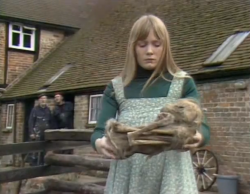
Beasts
1976 -

Prom Night II
1987 -
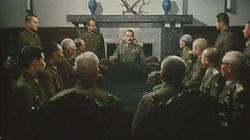
Men Behind the Sun
1986 -
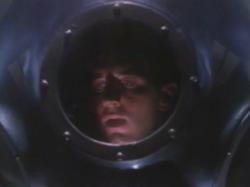
DeepStar Six
1989 -

At Midnight I’ll Take Your Soul
1964 -

They Came Back
2004 -

Buried Alive
1990 -
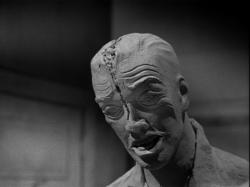
A Bucket of Blood
1959 -

Buffy the Vampire Slayer
1992 -

Night and Fog
1956 -

It Came From Beneath the Sea
1955 -
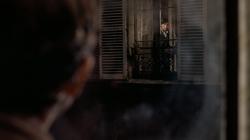
The Tenant
1976 -

Tokyo Gore Police
2008 -

The Rocky Horror Picture Show
1975
We don’t do comments anymore, but you may contact us here or find us on Twitter or Facebook.



